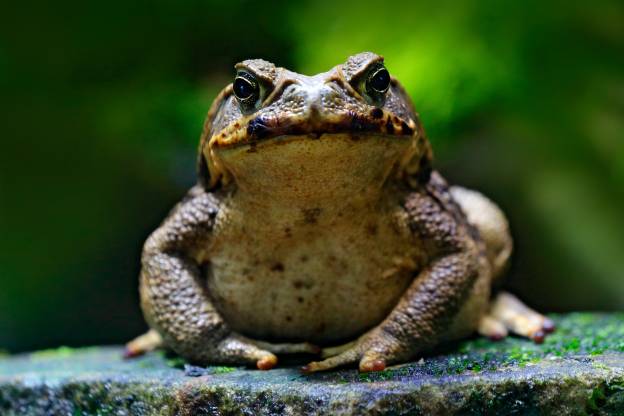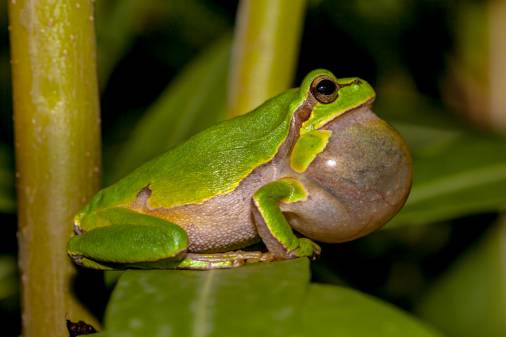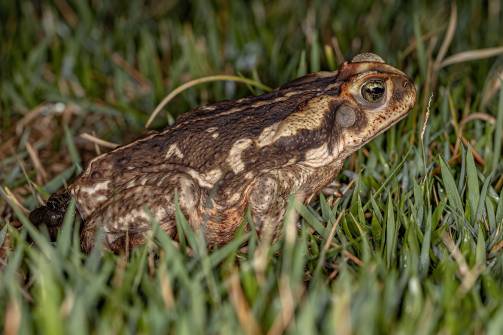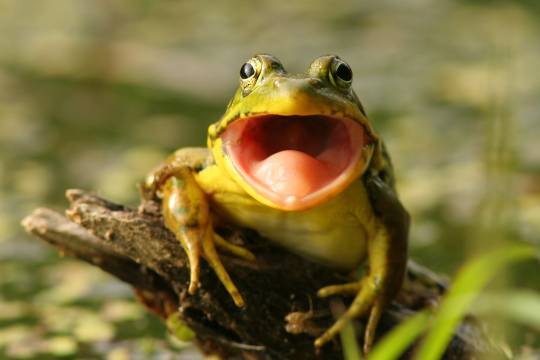Connect with a verified veterinarian in minutes. Licensed vets are available 24/7 to answer your questions. No need to worry about your furry family member.
Toads, like frogs, are extremely interesting animals! They’re fun to watch outside, but they can also be kept as pets. They’re great for pet parents who are allergic or sensitive to other types of animals, too.
If you’re considering adopting a toad as a pet, then you’ll need to know how to take care of him! This includes information on what toads eat. To help you, we’ve put together this article with information on what toads eat and more. Let’s get started!
What is a Toad?
Toads look very similar to frogs; however, they are very different animals. While both frogs and toads are amphibians, toads look quite different from frogs. For one thing, a toad has dry skin, which appears to have “warts.” Their legs are also shorter than a frog’s.
Toads also get around by crawling and short hops, while frogs tend to have long jumps and hops. In addition, the toad has a rounded nose and head. A toad’s eyes don’t have the same dark patch behind them as a frog does. And toads lay a string of eggs (spawn) rather than in a clump like frogs.
Toads live mostly on land, which is possible to their skin. A toad’s skin is tougher and holds in moisture, unlike a frog’s skin. This means toads can be found in some amazing places! Did you know that toads are found on every continent except Antarctica? You may encounter them in the garden, in areas with dense vegetation, forests, grasslands, and more. They do need to live near a fresh water source, as well as have an area plentiful with insects.
Toads hibernate in the winter, usually in caves and other dark places. The toad’s skin is also used as a protection against predators. It can take some time for a toad to shed its skin, so they often hide under stones or logs when they are exposed.
American toads, common toads, and even some species of toads can be found in the United States. They are not common to find, but they are fairly easy to spot. The American Toad is a small creature that can be found throughout the United States. The American Toad ranges from three inches to seven inches in length. Cane toads are a very common species of toad found in the United States. They can be found throughout the United States, but they are especially abundant in southern regions. Cane toads are nocturnal creatures and spend most of their time underground. They are also not considered to be extremely venomous, but they do have a potent toxin in their skin. This toxin is not very harmful to humans, but it can be a problem for some animals. The toxic secretion from the cane toad is a defensive mechanism.
Cane toads produce two different toxins, one that is deadly to most animals and one that is only harmful to insects. In order to find their food, they have developed glands in their skin that secrete these toxins. They use these toxins in defense against predators, but also against other animals that may compete for food or space in the same area.
Toad Life Cycle
Toads reproduce by laying eggs in the spring or summer. There are several different types of toads that lay their eggs, depending on the species. They may be sticky, as in a cane toad, or have a string of small eggs. Most toads breed during spring and summer, although some breeds breed year-round. Toads may go through a few life stages, such as egg, tadpole, and adult.
In the egg stage, the eggs are laid in moist areas such as rotting logs or under moist leaves. The eggs hatch into tadpoles. Tadpoles look like miniature versions of the adult toad. As tadpoles grow, they shed their skin and become frogs. Tadpoles will spend several weeks in the water, but they can also live on land if they don’t have to leave the water for food or other activities.
The larval stage is also called the “tadpole stage” and lasts for one to two years in some species. The larvae tend to stay in ponds or streams for most of their lives, but some species can live on land for a short time as well. At this stage, a young toad will look like a small frog with big eyes and long legs that resemble those of a tadpole. The first few weeks of life are spent eating and growing in size. In some species, this stage may last only one month while others may take several years to complete this phase of their life cycle. When it is time for the larva to metamorphose into an adult, it leaves its watery habitat and changes into a fully grown frog-like animal.
There are several ways that a toad’s life cycle may be interrupted. A male toad may stop breeding if he doesn’t find a mate. This is especially true for the New Zealand toad, which has only one breeding season each year. In some species, like the California Toad, females can also lay eggs at any time during the year.
Fun fact: Some toads have the ability to regenerate their tails. They do this by using their forelegs to wrap around the end of their missing tail. This allows them to regrow a new tail, which will grow at a rate of about 1 millimeter per day.

Review symptoms, medications & behavior to keep your pets healthy with a Vet Online in just minutes.
Ask a Vet Live NowThe Toad’s Diet
Toads are known for having a varied diet and eating almost anything that can fit in their mouths! They are carnivorous animals and will eat their prey live. Here’s what many toads love to eat:
- Flies
- Worms
- Spiders
- Crickets
- Slugs
- Grubs
- Snails
Larger toads will eat other types of food, including small rodents, birds, and more. It depends on where they live and the type of food available in their environment.
One thing to keep in mind is that toads will eat different things at different points in their life cycle. This means toad tadpoles will have a different diet than adult toads, etc.
The lifespan of a toad is about 10-15 years. Most toads breed once a year and lay between one and seven eggs in their summer. The eggs are sometimes hidden in crevices or soil, but the majority of them are laid on top of the ground, under rocks, or on tree bark.
In addition, gut-loaded toads can survive for a long time out of water. This is possible because toads store their fat in their stomachs, and they are able to access it by stretching the stomach. In a terrarium, a captive toad can live without water for several weeks, but in the wild, they are only able to survive for a few days.
Tadpoles eat plant material, which is usually algae. At this stage, toads (and frogs) are not carnivorous and rely solely on plant matter to live. It’s as they mature that tadpoles begin to have a taste for insects and more.
Juvenile toads (young toads—fully formed and past the tadpole stage) rely pretty much on small bugs. This is because the toads are small and are unable to eat larger prey.
As adults, toads obviously have more choices when it comes to their food! It’s at this point they’re large enough to eat anything that fits in their mouth.
In the wild, adult toads tend to ambush their prey. This means they wait for their food to appear in front of them, then quickly strike out with their tongue. Small toads will find some spot that feels comfortable, where they can blend in and then wait. Their prey is caught faster than you can say the number “one.”
Fun fact: Did you know that a toad’s tongue can be twice the length of their body? This is the average. Some toads will have shorter tongues—it just depends on their species. The long tongue helps to catch insects.
An adult toad, in the wild, can eat any of the animals and insects on this list (in addition to the previous list):
- Mice
- Beetles
- Bees
- Locusts
- Lizards
- Snakes
- Small fish
- Earthworms
- Fruit flies
- Other toads and frogs (yes, toads can be cannibalistic)
Toads swallow their live prey whole. While some wild toad species do have small teeth in the lower jaw, these are only used to hold the food, not chew it.
What Do Pet Toads Eat?
The answer will depend on whether your toad was once wild or has been captive-born (born to a breeder). If your toad was wild, then it will more than likely only want living food that’s still moving.
Captive-born toads, on the other hand, may eat insects, meat (meant for humans), and more.
Whether your toad has come from the wild or been raised in captivity, the best food for your toad will come from the pet shop, a bait shop, or even the grocery store.
Pet shop toad foods include live:
- Crickets
- Mealworms
- Superworms
- Roaches
- Hornworms
- Feeder minnows and guppies
- Pinky mice (or other small rodent pinkies)
You can also find canned food for toads at the pet shop, which includes:
- Crickets
- Mealworms
- Grasshoppers
- Snails (without the shells)
- Shrimp
- Superworms
- Black soldier fly larvae
- Silkworms
- Roaches
At the bait shop, you can find live food, including:
- Red worms
- Nightcrawlers
- Waxworms
- Mealworms
- Butter worms
- Green worms
At the grocery store, you can find some food that your toad might like if he’s been raised in captivity:
- Ground beef
- Small piece of beef or pork
- Beef liver
- Beef heart
- Tilapia (or other seafood)
- Soft fruits and vegetables
What Do Baby Toads Eat?
Adult toads are carnivores, which means they eat meat. Their favorite food is usually invertebrate prey, such as insects, spiders, worms, and grubs. Toads may also eat small vertebrates like lizards and small mammals. In some cases, they might eat small mice. They have also been known to eat slugs, snails, and other invertebrates. Toads don’t eat plants or fruit, so you shouldn’t expect to find them in your garden eating fruit!
Toadlets, however, are omnivores (they eat both plants and animals). However, the babies don’t eat live insects until they are older. When baby toads hatch from their eggs, they have an appetite for almost anything they can find in the wild. So they may take a bite of grass and a nibble of flower before moving on to an insect or worm.
If you have a pond near your home and you see many frogs and toads near it, there is a good chance that your pond contains tadpoles! The water in ponds may be so warm that tadpoles are able to survive out of water for long periods of time. If you see many frogs in your pond when it is very hot outside (around 80 degrees F), there could be some tadpoles there too! You can easily tell if you have tadpoles in your pond because they are transparent and have a small, bulging stomach.
Cannibalism is quite common in toads. It can be due to the food being scarce, or because the toad feels threatened. Toads will eat their own kind when food is scarce. In some cases, toads have been known to eat their young.
Nutritional Needs for a Toad
Your toad will not be healthy unless he has a varied diet, which includes vitamin supplements and minerals needed to stay healthy. This means you can’t just feed him pinhead crickets all the time. Your toad needs to have a balanced diet in order to stay happy and healthy!
What’s more, insects raised for consumption generally don’t have the same amount of nutrients as their wild counterparts. So, this is another reason a toad could become sick if only fed insects from the pet stores.
For this reason, it’s crucial to provide different foods for your toad. This may be a mix of insects and worms. For other toads, you may need to include some pinky rodents, etc.
In addition, it’s important to also dust all insects with a vitamin, calcium, and mineral powder made for amphibians.
Feed Your Toad at the Same Time Every Day
Toads are creatures of habit and prefer to eat on a schedule. For this reason, it’s best to make every effort to feed your toad at the same time every day. Because toads are nocturnal, the best time to feed your toad is in the evening.
So, there you have it! We hope the information in this article provided the information you need about feeding your toad a healthy, varied diet. We wish you and your pet toad many years of companionship to come!
Connect with a verified veterinarian in minutes. Licensed vets are available 24/7 to answer your questions. No need to worry about your furry family member.

Kyoko
Kyoko is from a family of 3 and moved to New York with her parents and siblings when she was 13. Kyoko is fond of spending a great amount of time with pets, specifically her beagle Luna and cat Missy. Her boyfriend often complains that she spends too much time giving attention to their animals. Kyoko has written dozens of articles concerning pets and is aiming at owning a pet shop one day!
Review symptoms, medications & behavior to keep your pets healthy with a Vet Online in just minutes.
Ask a Vet Live Now




